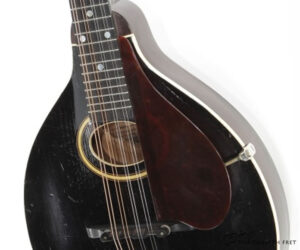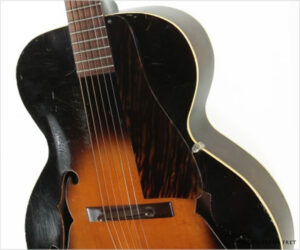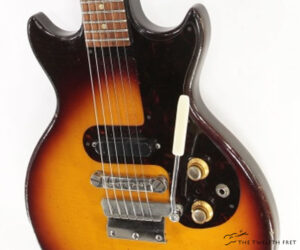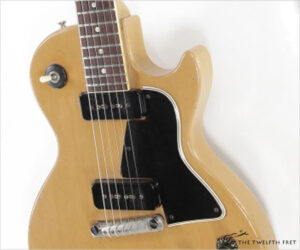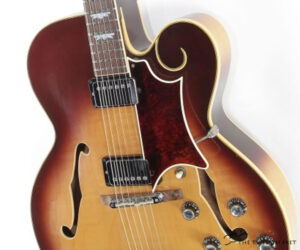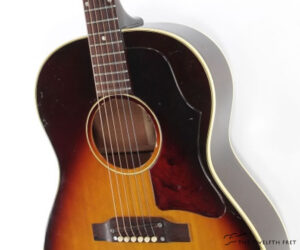Here we’re looking at a Gibson Style A ‘Snakehead’ Black-top mandolin in A-1 trim from 1927 in overall good and largely original condition. The ‘Snakehead’ term refers to the tapered headstock, an innovation by Lloyd Loar that reduced string friction at the nut. ‘Snakehead’ models were built from 1923 to 1927.
Kalamazoo
The Cromwell G-4 archtop guitar was built by Gibson from 1935 to 1939 and sold to various retailers and catalog distributors. Inside this guitar, visible through the bass F-hole is a well-preserved yellow label reading ‘New York Band Instrument Company’ indicating that it was sold by that company, at the time a large music store in New York City, but gone by 1950.
Shown here is a fairly rare guitar – an Epiphone Olympic Special, built during 1963 at the Gibson Kalamazoo plant and looking almost exactly like a single-pickup Melody Maker. This version was offered from 1963 to 1969, with a production total of around 3,000 guitars.
This instrument has sold
MORE →The Gibson Les Paul Special TV model appeared in 1955, with the ‘TV’ referring to a special ‘limed’ finish intended to make the guitar more visible on black and white televisions and films. This finish had become available in 1954 on the Les Paul TV, a single-pickup Les Paul Junior. Both models used a slab Mahogany body with no Maple cap, and a Mahogany neck, with a bound Rosewood fingerboard, which into the mid 1960’s meant Brazilian Rosewood.
This Gibson Tal Farlow is a rare model. Named after the renowned jazz guitarist Tal Farlow, who played Gibson guitars throughout the ’50s where this model was designed to meet Farlow’s demands for a guitar that combined superb playability with a rich, resonant tone.
Appearing towards the end of 1962, the Gibson B-25 replaced by way of renaming both the LG-2 and LG-3 models, which only differed in top finish. The sunburst top LG-2 became the B-25, while the natural finish top LG-3 became the B-25N. All three models were identical in terms of construction.
This instrument has sold
MORE →